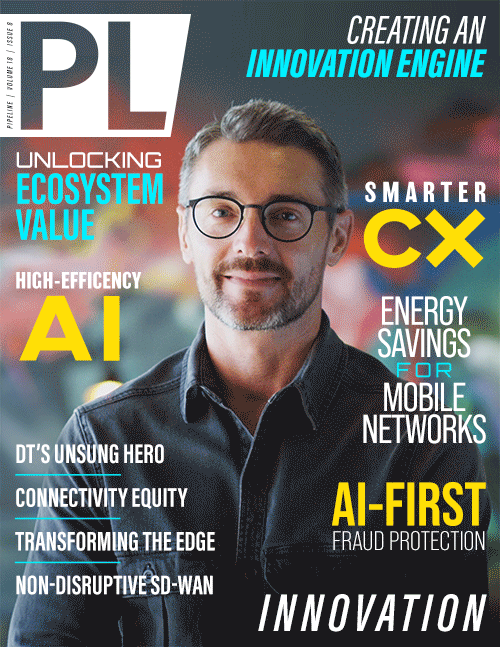AI for Smarter CX in the Contact Center
By: Vasili Triant

Post-pandemic customer expectations are outpacing what’s possible with antiquated contact center infrastructure solutions. The delicate balance between representing your brand and prioritizing customer care requires new technology and a new mindset. Here are three concrete steps brands can take to get it right.
Tandem high-tech,
high-touch customer care
Worldwide spending on cloud services is forecast to grow 20.4 percent in 2022 to $494.7 billion, up from $410.9 billion in 2021. In 2023, spending is expected to balloon to nearly $600 billion. Despite this, many legacy brands are still not using cloud infrastructure to manage customer service.
Traditional customer experience (CX) technology today—which is built specifically for the call center agents, their supervisors and the administrators who are purchasing the technology—creates an issue with the “forgotten persona”—the customer. This is a problem.
Consider that there are approximately 29 billion connected devices globally, which is three times the human population. Yet, most customer service operations are stuck in the landline era. When was the last time you were able to have all your customer needs met via text or in-app? Today's consumer wants access to on-demand support, using their preferred devices and communication channels. And when they call, they want to talk to an agent who is informed, equipped, and helpful.
This makes investing in your tech stack critical. Modern and intelligent cloud contact center technology allows agents to engage with customers where they are most comfortable—on their cellphones—in mobile apps, SMS messaging, social media, email, video and even by phone. The vision is to make customer service easy, intelligent, and cohesive. Engaging with customers where they are reduces many traditional CX frustrations, like channel switching, having to repeat personal information to multiple agents, long wait times and drawn-out cases.
Customer care means taking care of people—making them feel seen, valued, and connected to a brand’s core values. Pairing modern tech and customer care can bridge the gap between the consumer and the brand, strengthening that relationship so that the customer has a good experience and is compelled to keep coming back. For instance, using mobile phone technology like Face ID can remove frustrating tasks like reconfirming one’s identity. Customers will no longer need to repeat their mother’s maiden name to multiple agents to verify their identity. That’s a win for the customer and the agent—and a relatively simple CX expectation.
But technology can only take a brand so far: tech investments must be paired with a new mindset and an operational reset.
CX transformation is more than tech enablement
CX standards today revolve around how automation can increase return on investment in the customer service department. Many brands still view customer service as a cost center and invest in automation to drive savings. This is a dangerous viewpoint that has a negative impact on the customer experience. Approximately one in five consumers say they have a bad interaction with an organization every 90 days. Put another way: U.S. businesses risk losing $1.9 trillion annually in consumer spending due to poor service experiences.
Tech can’t solve these problems alone. Business process transformation is necessary for CX transformation. While many brands today are implementing cloud contact center technology, they often don’t change their process and thinking, which perpetuates the negative customer experience. On the other hand, leading brands view customer service as a value center, with each positive interaction increasing the lifetime value of the customer.
One of the biggest process transformations needed is in how brands value and manage customer data. Due to a lack of tech and poor processes, agents rarely have the data they need to provide an efficient, personalized experience, or solve problems



















